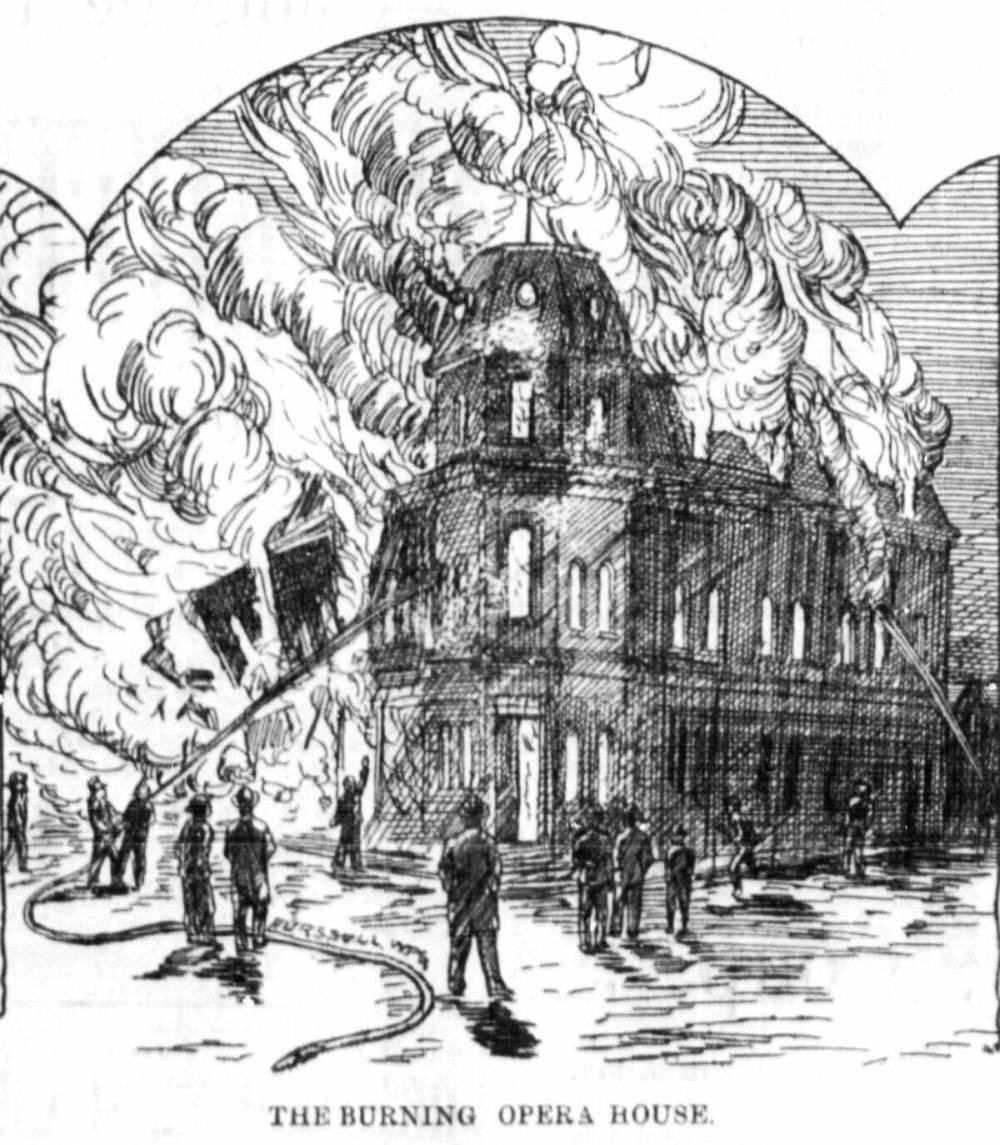Princess Opera House fire of 1892 nearly wiped out the Exchange District
Advertisement
Hey there, time traveller!
This article was published 07/05/2025 (216 days ago), so information in it may no longer be current.
The Princess Opera House opened to great fanfare in May 1883 at the corner of Princess Street and Ross Avenue. For many, the $75,000 venue was another illustration of Winnipeg’s journey from a prairie outpost to a North American metropolis.
Despite its name, the Opera House was a theatre for hire and hosted everything from lectures and dance recitals to plays and musicals. Opera was rarely on the bill.
The building’s grand appearance was deceptive according to Free Press theatre critic Harold Spencer who wrote decades after its demise: “Although presenting, externally, an imposing appearance, the Princess Opera House was, in reality, a flimsy frame building erected on piles and posts with brick veneer on the street elevations.”
Still, with its sloped floor, large orchestra pit, and cavernous hall that seated up to 1,400 patrons, it was the best performance venue the city had to offer.
At around 2 a.m. on Sunday, May 1, 1892, a police officer saw smoke coming from the building and called in the alarm. The market square bell was rung to notify the central fire hall and area residents of the danger.
The first witnesses described a “wall of fire” at the rear of the building along the back lane and it was fully engulfed by the time the first firefighters arrived at the scene three minutes later.
Embers and collapsing debris spread to nearby buildings, many of them highly flammable livery stables and blacksmith shops that served the horses of nearby factories. More alarms were raised and soon crews from every fire hall in the city were there fighting dozens of blazes.
Residents went to area stables to set animals loose and dozens of bolting horses, cows, and a pair of oxen added to the pandemonium.
Little could be done to save the wooden structures nearest the theatre, including a Salvation Army barracks across the street. Firefighters concentrated their efforts on the more substantial brick and stone buildings, such as the Grand Union Hotel, Bawlf’s grain warehouse and Paulin’s biscuit factory.
The strategy worked and after a couple of hours of intense work, the fire was declared under control. The rest of the day was spent putting out hot spots and rounding up animals.

In all, nineteen buildings were destroyed, and the same number were left with various levels of damage. Incredibly, no loss of human or animal life was reported. Mr. Morris, a steeplejack who sometimes assisted the fire department at big fires, was seriously injured when a falling beam struck his head.
The cause of what was Winnipeg’s worst fire to that point remains a mystery.
Theatre manager William Seach and his caretaker made their final rounds at midnight and ushered out the last members of the night’s on-stage production before shutting the gas meter and locking up. They insisted that nothing was left lit, but it was assumed that a lantern or candle must have been missed.
The Princess Opera House, once the jewel in Winnipeg’s entertainment crown, was never rebuilt.

Christian Cassidy
Christian Cassidy is a Manitoba Historical Society council member and a proud resident of the West End. He has been writing about Winnipeg history for more than a decade on his blog, West End Dumplings.
Our newsroom depends on a growing audience of readers to power our journalism. If you are not a paid reader, please consider becoming a subscriber.
Our newsroom depends on its audience of readers to power our journalism. Thank you for your support.




